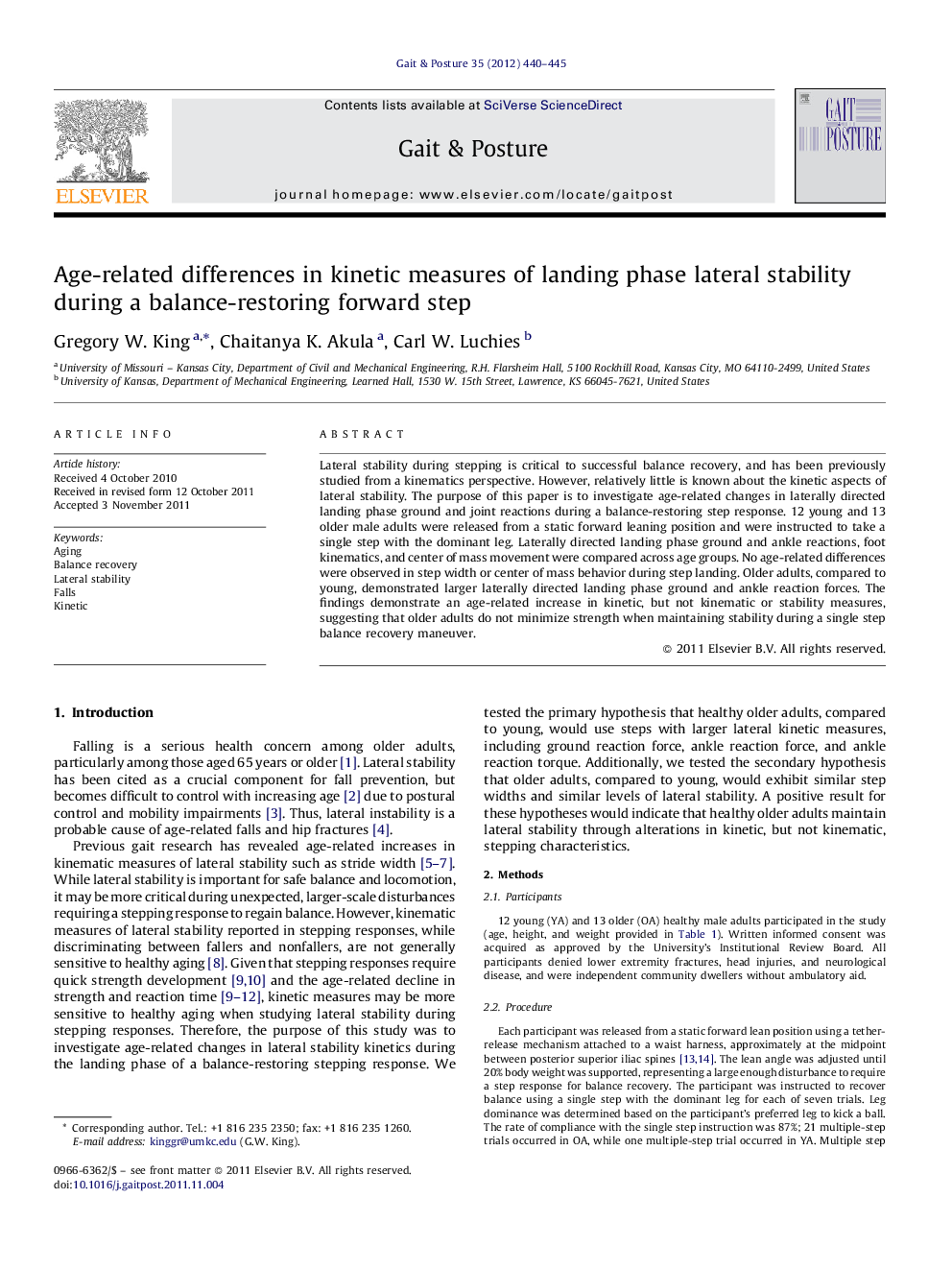| Article ID | Journal | Published Year | Pages | File Type |
|---|---|---|---|---|
| 6208003 | Gait & Posture | 2012 | 6 Pages |
Lateral stability during stepping is critical to successful balance recovery, and has been previously studied from a kinematics perspective. However, relatively little is known about the kinetic aspects of lateral stability. The purpose of this paper is to investigate age-related changes in laterally directed landing phase ground and joint reactions during a balance-restoring step response. 12 young and 13 older male adults were released from a static forward leaning position and were instructed to take a single step with the dominant leg. Laterally directed landing phase ground and ankle reactions, foot kinematics, and center of mass movement were compared across age groups. No age-related differences were observed in step width or center of mass behavior during step landing. Older adults, compared to young, demonstrated larger laterally directed landing phase ground and ankle reaction forces. The findings demonstrate an age-related increase in kinetic, but not kinematic or stability measures, suggesting that older adults do not minimize strength when maintaining stability during a single step balance recovery maneuver.
⺠We studied kinetic aspects of lateral stability during single-step balance recovery maneuvers. ⺠Older adults exhibited larger laterally directed forces during balance recovery. ⺠No age differences were observed in kinematic measures of lateral stability. ⺠Older adults appear to maintain lateral stability through increased strength usage.
